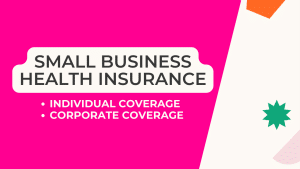One thing that’s surprised me in the last two months is how many of you are operating your businesses as sole proprietors or partnerships, even after several years. If you plan to continue to run a business as you, let’s revisit some best practices for separating your business from your personal life.
Use a dba. Want to build a brand? Setting up a dba, or “doing business as” name, lets you operate your business as a brand name. It builds your credibility. And, it can give you a layer of privacy as a business owner, especially if you use a virtual address. To set up a dba, you’ll first need to check whether it’s available in your city, county, and/or state. There’s a small one-time filing fee. You can associate multiple names on a single filing.
Open a second bank account. “I just use the money that’s in my account,” I’ve heard about a thousand times this spring. You’ve probably realized in the last few months that having your business cash mingled with your personal cash can get complicated, fast. Open a second bank account for your business transactions. If you use a dba, you can put the company’s name on the account as well and deposit funds paid in your company’s name.
Use one credit card for business expenses. As a sole proprietor, your personal credit is your business credit. You can get a credit card with your dba on it, or use one of your existing cards as your “business” card. If you are working on your credit, set up a prepaid card that you can recharge from your bank account. This will create a clear paper trail of business expenses for your accountant. And as a bonus, you can link it to your accounting system to import all of your transactions.
Keep books. Clearly separating your business revenue and expenses in a bookkeeping system will give you a better understanding of what it costs to run your business. If ever you’re asked to provide proof of what the business pays for, you have clear records. It will also make tax time much easier, as you can simply print out your annualized reports for your accountant.
Quickbooks Online Self-Employed is $7 per month and includes invoice generation, quarterly tax calculations, and recommendations to optimize your deductions. You can also use a service like Bench for as little as $139/month if you want someone else to do this for you.
Regularly evaluate your risks. If you’re sued, your personal assets like your bank account, car, house, and retirement account are fair game. Incorporating separates your personal assets from your corporate ones. It also shields you from business creditors. If you’re in a partnership, it also protects you from your business partners’ personal choices. You might not have “stuff” now, but keep checking in as your assets grow.
Know your tax opportunities. Self-employment tax is tough – 12.4% for federal. If you’re earning more than $70,000, you may get a significant tax break (up to 17% federally) by being taxed as an S-corp.
A sole proprietorship or partnership is an easy way to get started. But make sure you’re checking in regularly on whether it still makes sense for you. The additional $2,000 – $5,000 per year to have an LLC can quickly become worth it as your business and net worth grow.



